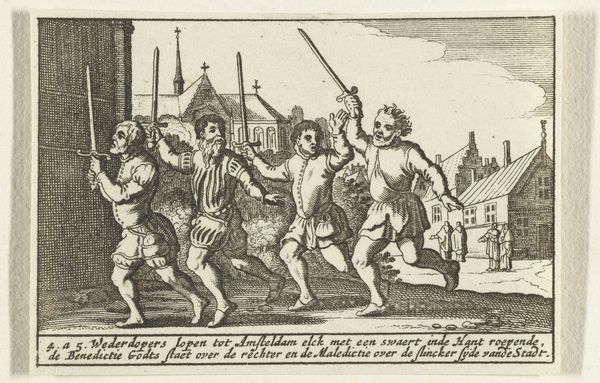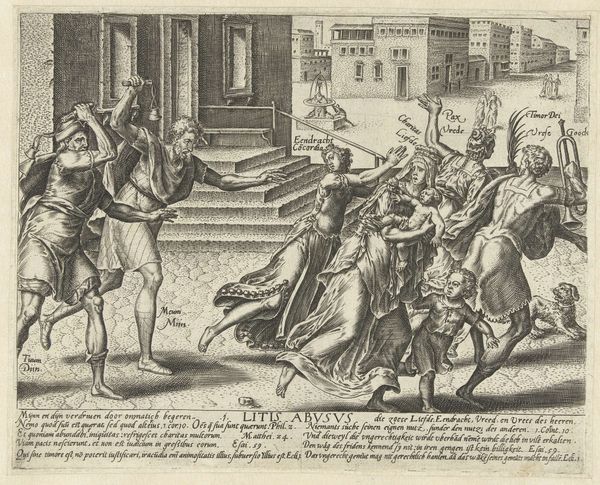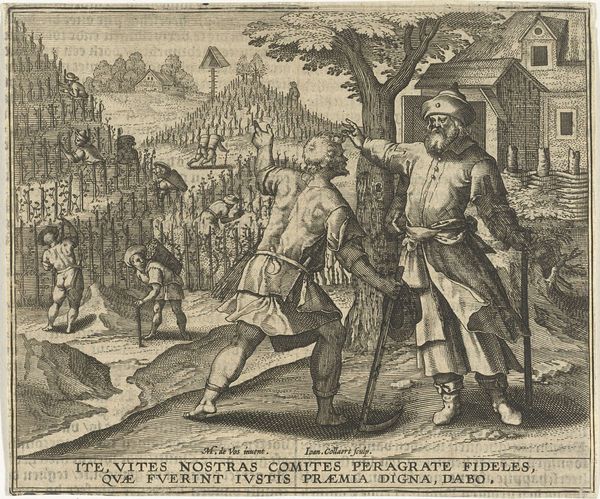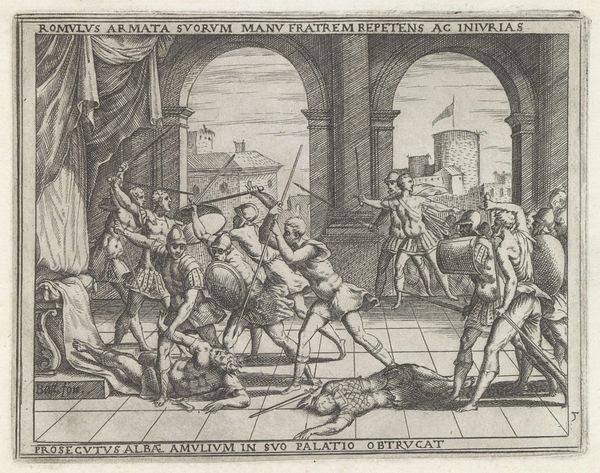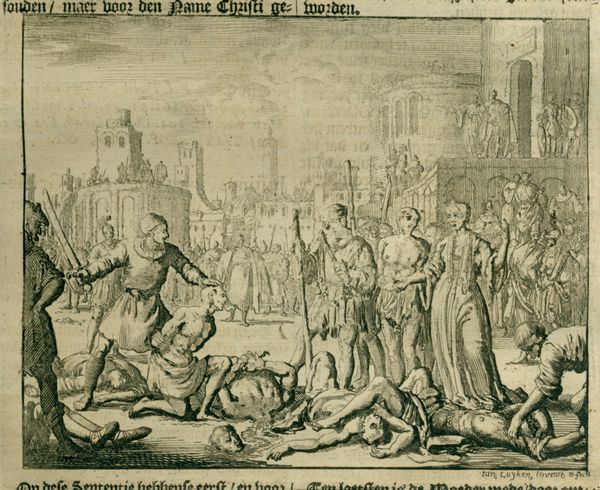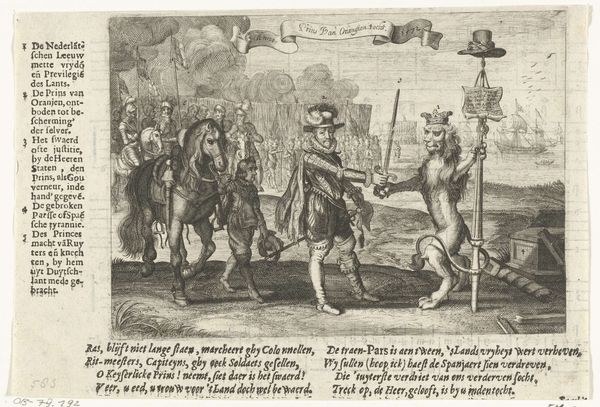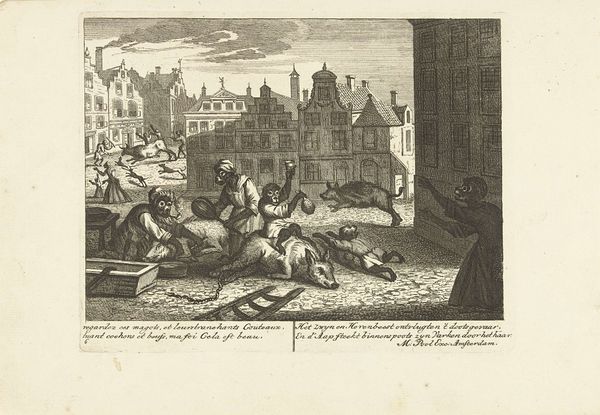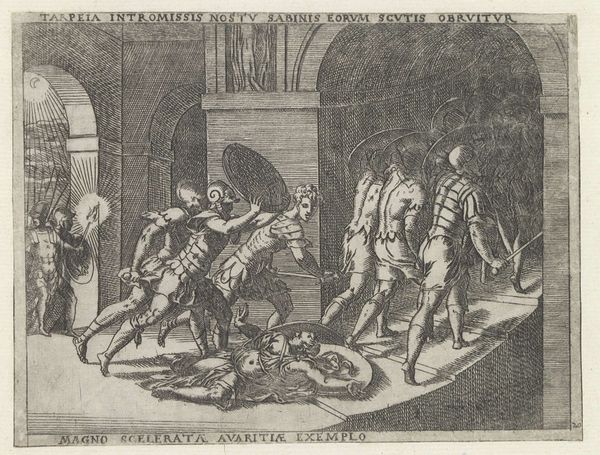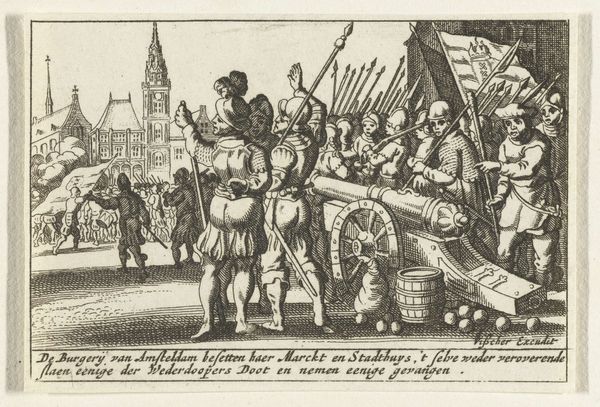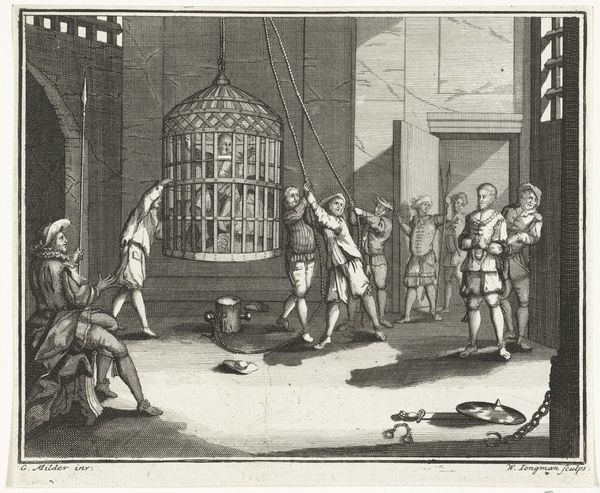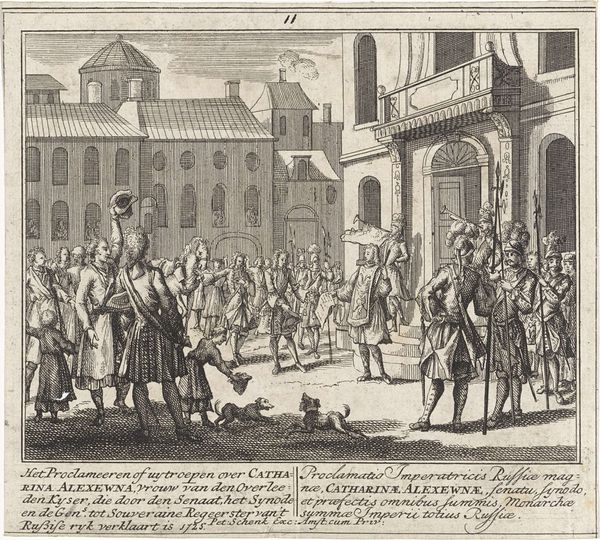
print, engraving
#
narrative-art
#
baroque
#
dutch-golden-age
# print
#
pen illustration
#
old engraving style
#
figuration
#
genre-painting
#
history-painting
#
engraving
Dimensions: height 67 mm, width 98 mm
Copyright: Rijks Museum: Open Domain
Editor: This is "The Anabaptists Occupy the Dam, 1535" by Pieter Hendricksz. Schut, created sometime between 1629 and 1652. It’s an engraving. It depicts a really brutal scene – a clash between armed figures and what looks like a massacre. How do you interpret this work, especially considering its public function? Curator: Given the timeframe and subject matter, we must understand this engraving as a powerful piece of political propaganda. Schut produced this print nearly a century after the event depicted, during the Dutch Golden Age, a period of immense national pride and also fierce religious and political debates. Editor: Propaganda? That's interesting, what clues point to this? Curator: Note the inscription at the bottom. It details the Anabaptist occupation and their murder of the mayor. By representing this historical event, Schut evokes anxieties about religious extremism and social upheaval, potentially aligning viewers with the established political order. How do you think this print functioned in society during that era? Editor: So it wasn’t just documenting history, but shaping public opinion? The way it visualizes a specific event frames it within a particular political narrative, reinforcing a negative view of the Anabaptists. Curator: Precisely! Museums and the art market played a crucial role here; prints like this, circulated widely, served as potent tools for shaping social and political attitudes, using historical narratives to solidify existing power structures. Editor: I hadn't considered it in that way. Thanks for pointing out the propaganda and historical context; it makes the engraving far more meaningful. Curator: And by understanding its social role, we see how images can be wielded as a form of power.
Comments
No comments
Be the first to comment and join the conversation on the ultimate creative platform.
